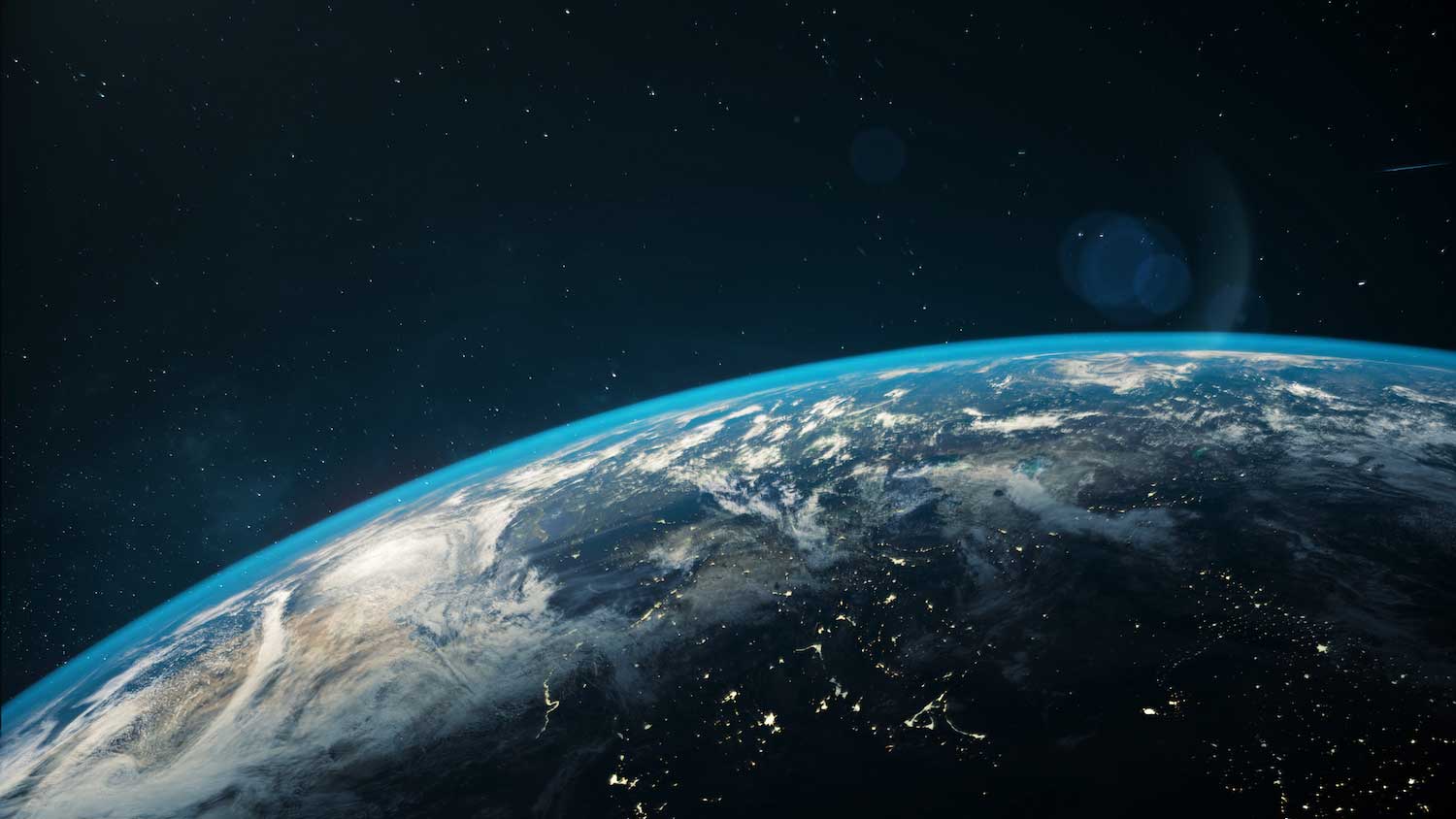There are various ways to characterize Earth, but fundamentally, it is our dwelling place. It not only sustains human existence but also provides a habitat for countless plant and animal species.
Despite Earth appearing as the focal point of our cosmos, it is just one of over a million entities within our solar system. (It's worth noting that technically, the universe lacks a singular center.) Our residence lies among eight planets within an unfathomably vast solar system. For instance, our planet, the third from the sun, is situated more than 93 million miles away from it, while Neptune, the farthest planet, rests at a staggering distance of 2.78 billion miles.
Now, returning to Earth, our home comprises approximately 71% water and 29% land, fostering diverse ecosystems that support myriad forms of life. This brief overview barely scratches the surface of Earth's complexity; there's much more to explore.
It's really old, but it won't last forever
Our 4.5 billion year old planet, sculpted from cosmic dust by the invisible hand of gravity, faces a future far grander than its birth. While NASA tells us Earth has spun for eons, its existence isn't infinite. Our fate is intertwined with the sun, a giant ball of fire steadily burning its fuel. When that fuel depletes, the sun's core will collapse, triggering a violent series of events. The sun's outer layers will balloon outwards in a scorching embrace, consuming the innermost planets, Mercury and Venus, in its fiery breath. Earth, thanks to its slightly larger orbit, might escape immediate incineration. However, scientific models paint a grim picture – even our planet won't emerge unscathed.
But there's a twist! Even if Earth itself persists for a few billion more years, it doesn't guarantee a hospitable environment. Since the 1800s, human activities have been like a fever on the planet, pushing its climate out of balance. Oceans are warming, ice sheets are shrinking, and extreme weather events are on the rise – all thanks to a rising global temperature. The harsh reality is that Earth might become uninhabitable for humans and countless other species well before the sun throws its final tantrum.
It isn't quite round
Our planet Earth might seem like a perfect sphere, but a closer look reveals a surprising truth. Earth bulges slightly at the equator, thanks to the centrifugal force caused by its constant rotation. This equatorial bulge isn't dramatic, though. The Earth's diameter is only about 26 miles wider around the equator compared to a measurement between the poles. That translates to a mere 0.3% difference, so small it's undetectable from space.
But here's where things get interesting: Earth's shape might not be set in stone. Recent research suggests the equator could be widening even further due to melting glaciers. Earth is also a dynamic body, constantly undergoing subtle shifts in form. Daily tidal forces cause regular variations, while tectonic plates grinding against each other or powerful events like earthquakes, volcanic eruptions, and meteor strikes can all leave their mark on the planet's overall shape.
It has really high highs and really low lows
Here's an expanded version of the text, diving deeper into the comparisons and geographical details:
A World of Highs and Lows: Exploring Earth's Elevation Extremes
While flat plains dominate the landscape of Illinois and the Midwest, our planet Earth is a place of dramatic elevation changes. Mountain peaks pierce the sky, reaching for seemingly impossible heights. The undisputed champion is Mount Everest, a titan amongst mountains, towering over a staggering 29,000 feet (over 5 miles) in Nepal and Tibet. This incredible peak forms part of the majestic Himalayan mountain range, a natural crown jewel of Asia. If you're looking for the highest point in the United States, Denali (formerly Mount McKinley) in Alaska takes the top spot, reaching a formidable 20,310 feet.
Conversely, the Earth also has areas that sink far below sea level. The Dead Sea, nestled between Israel and Jordan, claims the title of Earth's lowest point. Its surface dips an incredible 1,414 feet below sea level. This unique body of water also holds another distinction – it's one of the saltiest on Earth, making life difficult for most organisms, hence the name "Dead" Sea. The US equivalent for lowness is Death Valley in California, which rests 282 feet below sea level.
However, the lowest point on land is mere child's play compared to the immense depths of the oceans. Challenger Deep, located in the western Pacific Ocean, holds the record for the deepest known spot on Earth. This incredible trench plunges a mind-boggling 35,876 feet down, venturing far deeper than any mountain peak is high. Imagine placing Mount Everest at the bottom of Challenger Deep – its peak wouldn't even breach the water's surface! To put it another way, you could stack an impressive 20 Willis Towers (formerly Sears Tower) on top of each other, and they still wouldn't reach the bottom of this incredible oceanic abyss.
So, where exactly can you find this awe-inspiring trench? Challenger Deep is nestled within the Mariana Trench, a geological marvel located in the southwestern Pacific Ocean. If you ever find yourself near the US territory of Guam, which is about 1,300 miles east of the Philippines and 2,900 miles north of Australia, you're surprisingly close to Challenger Deep! Despite the vast distance, this incredible underwater valley holds the title for the deepest point on our planet.
Earth's name is unique
Our solar system is a celestial hall of fame for Greco-Roman deities. From fiery Mars, named for the god of war, to distant Neptune, king of the Roman seas, the planets bear the names of ancient gods and goddesses. Earth, however, stands out as the exception. Unlike its celestial neighbors, Earth's name isn't rooted in mythology but comes from a much older source: Old English. The term "Earth" has been in use for over a thousand years, evolving from the word "eorthe." This word itself has even deeper roots in the Anglo-Saxon term "berth," signifying a connection to the very foundation of our language. Interestingly, this common Germanic root is also the source of similar words in other European languages, like "aarde" in Dutch and "erde" in German. These words, like their English counterpart, can refer both to our planet as a whole and the ground beneath our feet.
It's squishy
Earth: A Solid Shell with a Squishy Surprise
While the ground beneath our feet feels firm and stable, Earth's insides hold a surprising secret: they're more like thick, slow-moving pudding than solid rock. Recall the Earth's layers from elementary school: the crust, a thin outer shell; the mantle, a vast middle layer; and the core, the innermost region further divided into outer and inner cores. The key to Earth's interior softness lies in the mantle, which makes up a staggering 84% of our planet's volume.
Unlike the rigid rock we might imagine, the mantle's extreme environment - scorching temperatures and immense pressure - creates a semi-solid state. This means the mantle isn't completely solid; instead, it can flow very slowly over vast timescales. This sluggish movement is the engine behind many geological phenomena we experience on the surface. Earthquakes, volcanic eruptions, and the slow, methodical dance of Earth's tectonic plates are all driven by the unseen churn within the mantle.
The solid ground we take for granted is actually a thin outer layer, the crust, which represents a mere 1% of Earth's volume. This seemingly permanent surface formed over millions of years as molten rock and water-rich minerals from the churning mantle oozed upwards, cooled, and solidified. So, the next time you step outside, remember that you're standing on a solidified remnant of Earth's once-squishy interior – a testament to the dynamic processes happening far beneath our feet.
This hidden softness within Earth also plays a crucial role in generating our planet's magnetic field. As the outer core, composed of molten iron, churns due to the mantle's influence, it creates a dynamo effect that generates the magnetic field enveloping Earth. This magnetic field acts like a protective shield, deflecting harmful charged particles from the sun and ensuring a habitable environment for life.
In conclusion, Earth's interior, far from being a static, solid mass, is a dynamic and surprisingly soft region. The mantle's sluggish movement shapes our planet's surface through earthquakes and volcanoes, while its influence on the outer core helps generate the vital magnetic field that safeguards us. So, the next time you think about Earth, remember – it's a complex and fascinating world, with a surprising amount of squish underneath our solid ground.













0 Comments